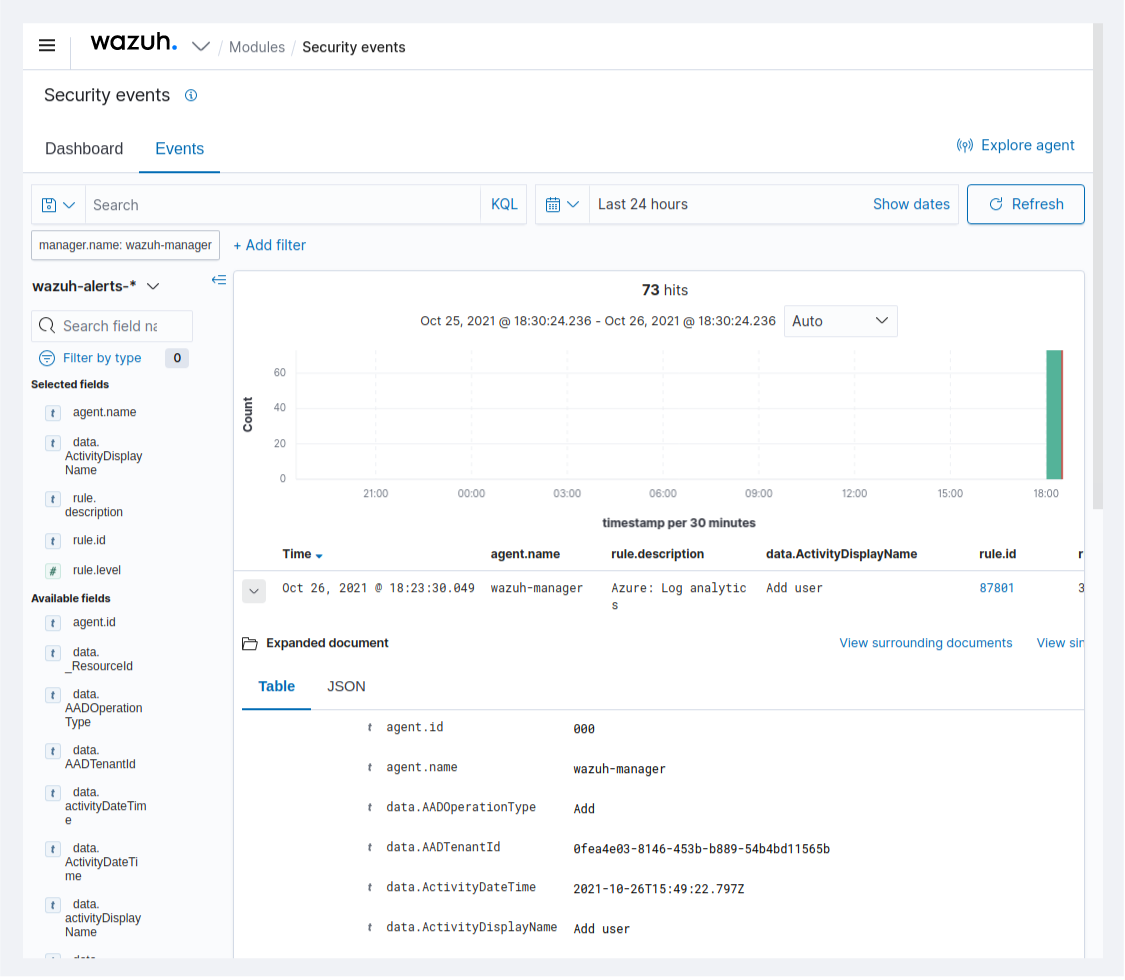Using Azure Log Analytics
Azure Log Analytics is a service that monitors your infrastructure offering query capabilities that allow you to perform advanced searches specific to your data.
The Log Analytics solution helps you to analyze and search the Azure activity log in all your Azure subscriptions, providing information about the operations performed with the resources of your subscriptions.

The data collected by Log Analytics can be consulted through the Azure Log Analytics REST API. The Azure Log Analytics API uses the Azure Active Directory authentication scheme.
A qualified application or client is required to use the Azure Log Analytics REST API. This must be configured manually on the Microsoft Azure portal.
Setting up the application
The process explained below details the creation of an application that will use the Azure Log Analytics REST API. It is also possible to configure an existing application. If this is the case, skip the Creating the application step.
Creating the application
In the Azure Active Directory panel, select the option App registrations. Then, select New registration.
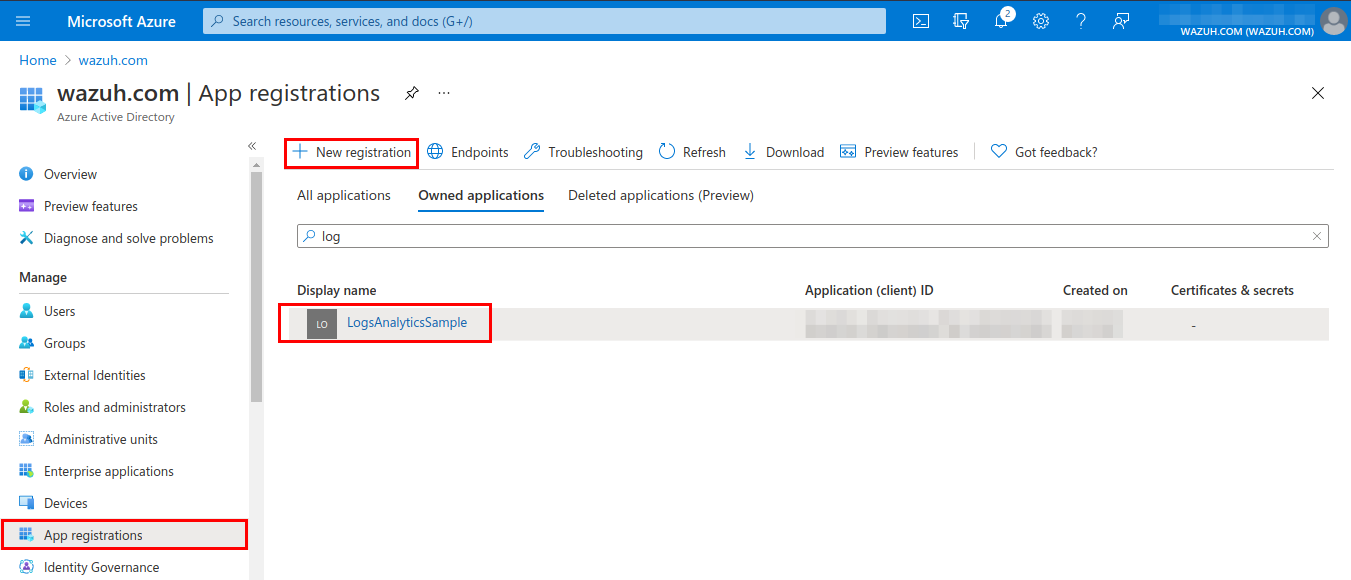
Giving permissions to the application
Go to the Overview section and save the Application (client) ID for later authentication.
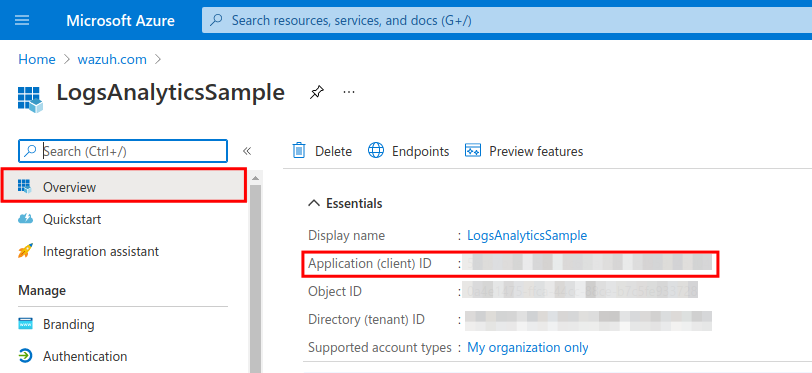
Go to the API permissions section and add the required permissions to the application.

Search for the Log Analytics API.

Select the Read Log Analytics data permission from Applications permissions.
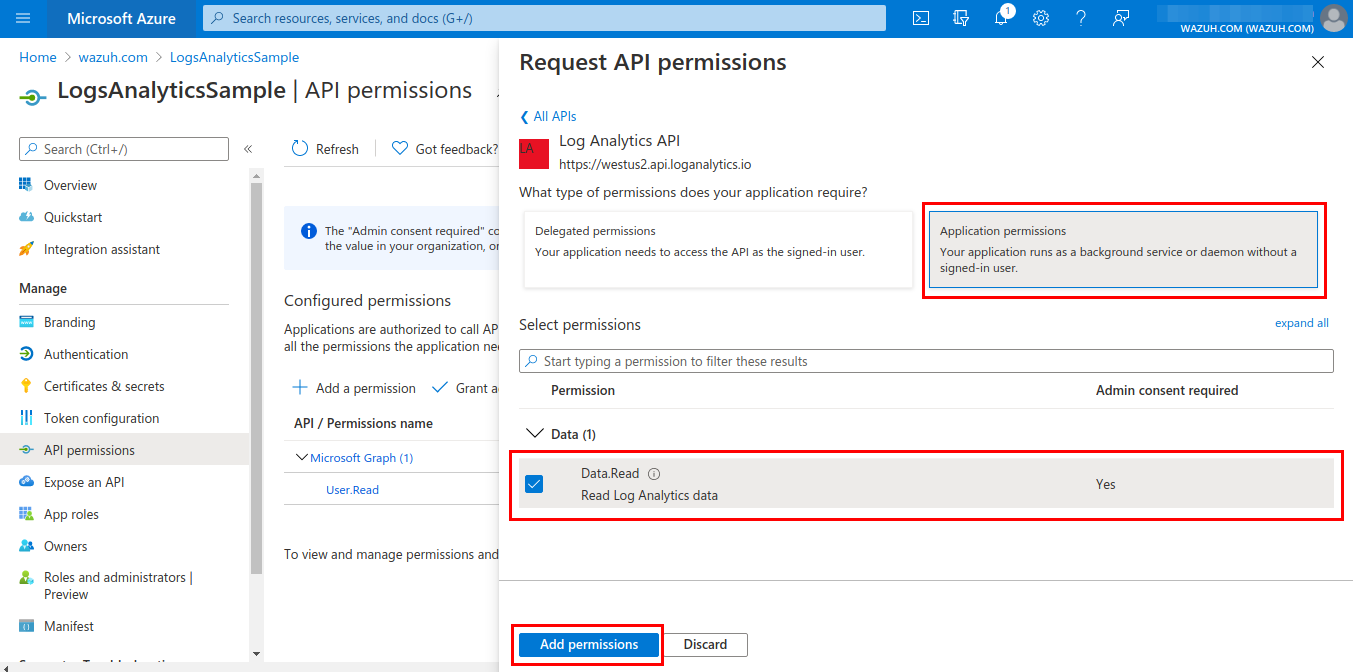
Grant admin consent for the tenant domain used for the permission added in the previous step. This must be done by an admin user.
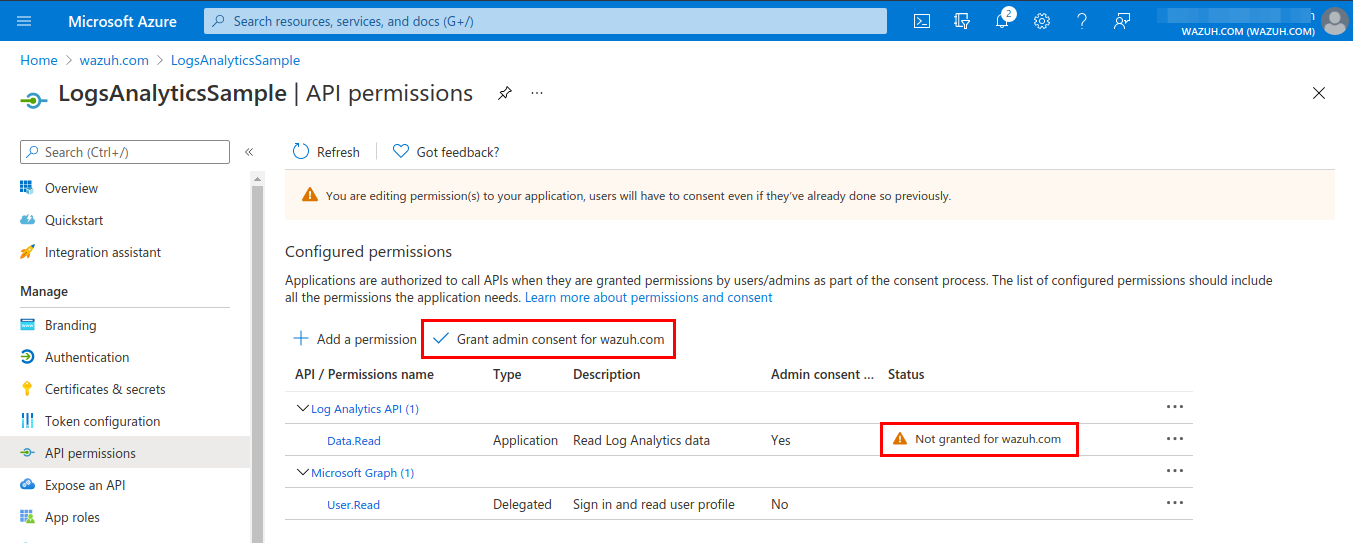
Obtaining the application key for authentication
Select Certificates & secrets and fill in the Description and Expires fields. Copy the value once the key is saved. This is required to authenticate the application in order to use the Log Analytics API.

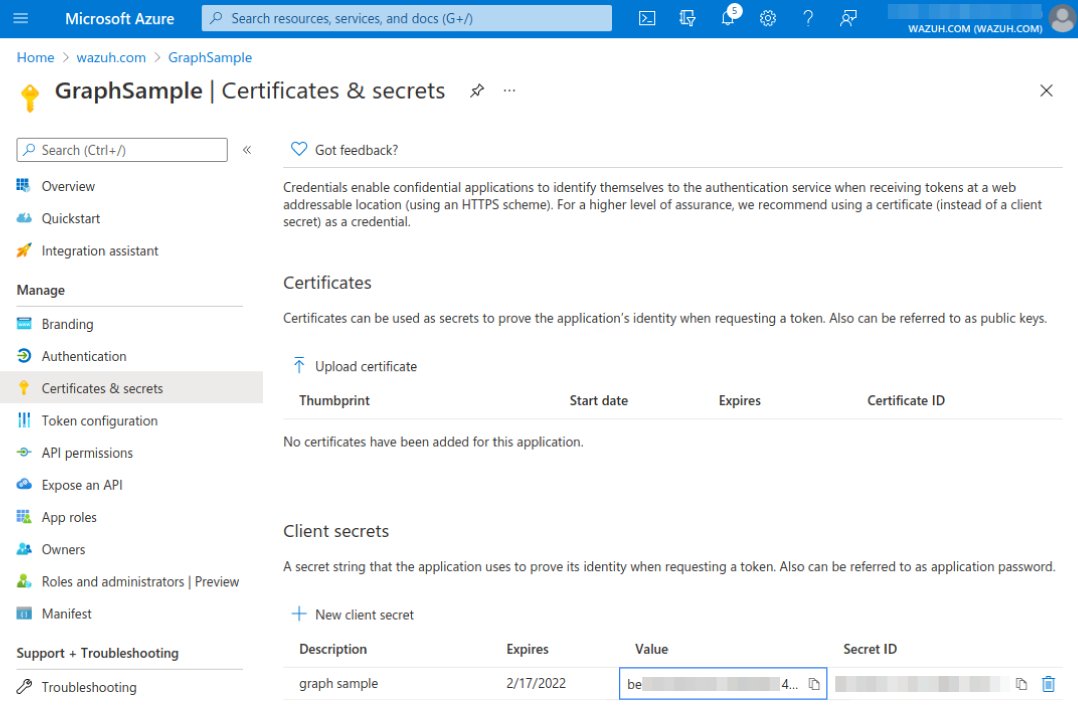
Giving our application access to the Log Analytics API
Access Log Analytics workspaces and create a new workspace or choose an existing one. Then, copy the
Workspace Idvalue from the Overview section. This will be used in the Wazuh configuration to allow making requests to the API.

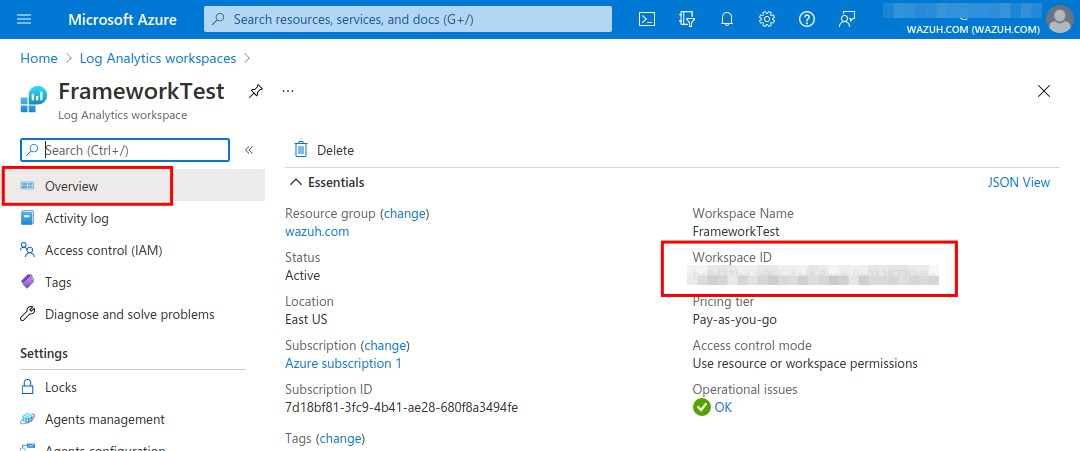
Add the required role to the application in the Access control (IAM) section by clicking the Add and selecting add role assignment.
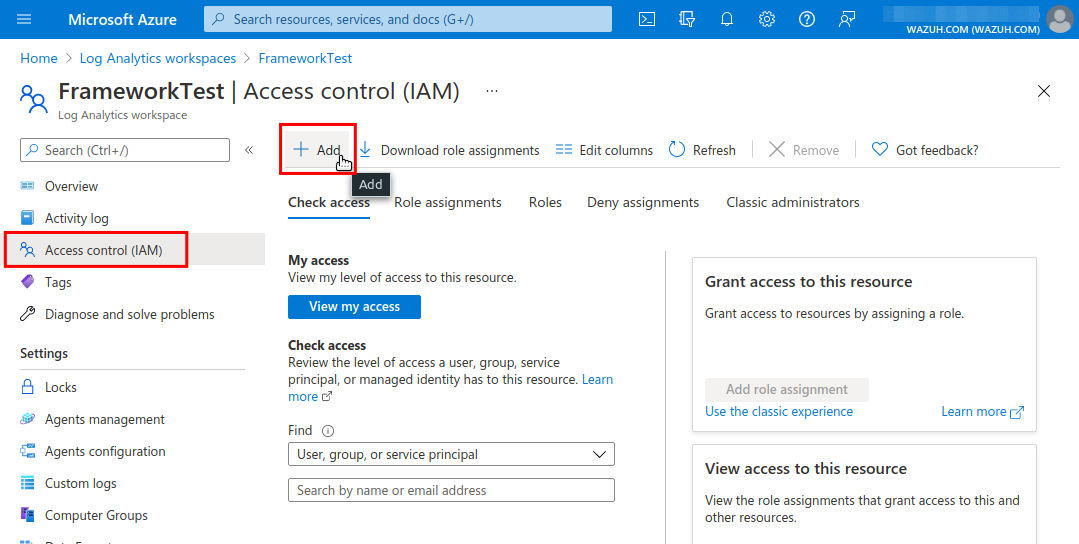
Fill in the required fields and click save. It is important to choose the User, group, or service principal option in the drop down menu and to type the full application name in the Select field.
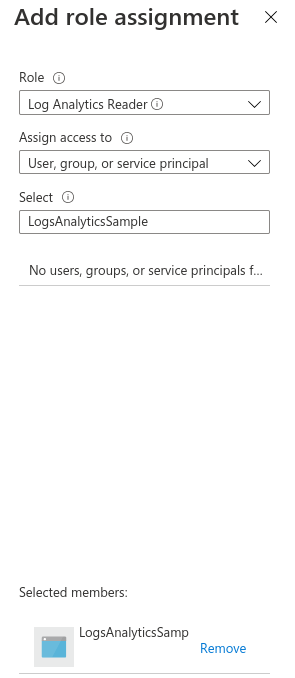
Azure Log Analytics use case
Here is an example of monitoring the activity of the infrastructure using the previously mentioned Azure application.
Creating a user
An easy way to test this is to create a new user in Azure Active Directory. A few minutes after the creation of the user, a new log will be available for Log Analytics reflecting this change. The log can be checked using the AuditLogs query, by accessing Log Analytics and running the AuditLogs query.
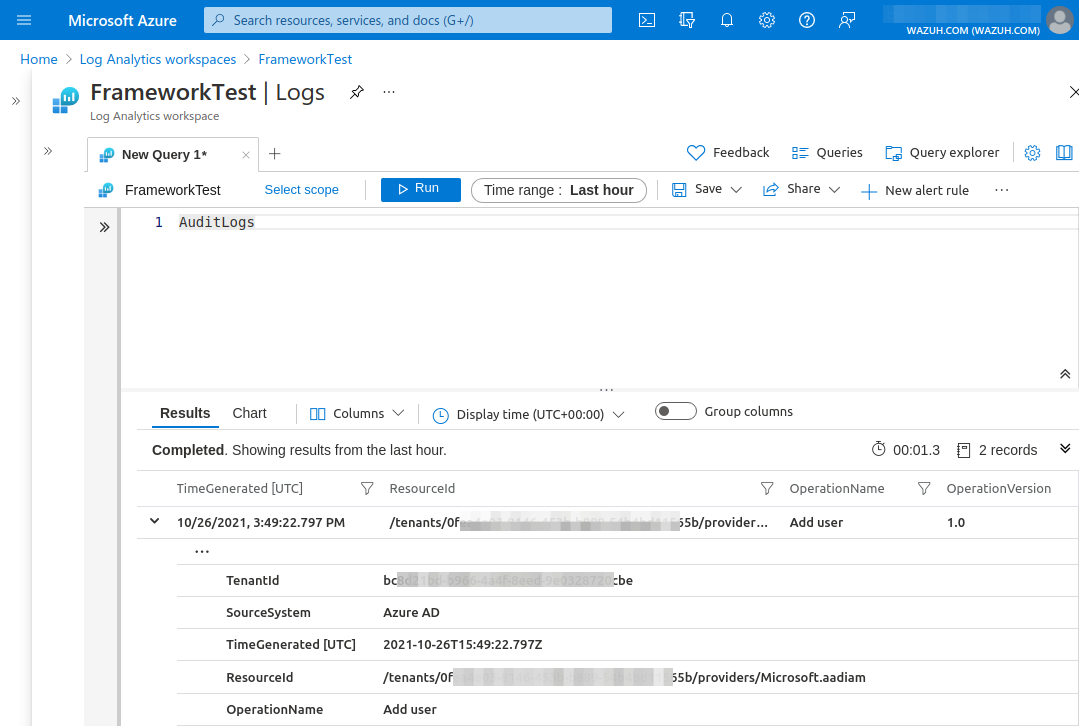
Wazuh configuration
Proceed with configuring the azure-logs module in the local configuration (ossec.conf). The key and ID of the application saved during the configuration of the application will be used here, as well as the workspace ID. In this case, both fields were saved in a file for authentication. Check the credentials reference for more information about this topic.
Through the following configuration, Wazuh is ready to search for any query accepted by Azure Log Analytics. This example configuration includes a representative tag and will be scheduled for every Monday at 02:00, using an offset of one day, which means only the log data from the last day will be parsed:
<wodle name="azure-logs">
<disabled>no</disabled>
<run_on_start>no</run_on_start>
<log_analytics>
<auth_path>/home/manager/Azure/log_analytics_auth.txt</auth_path>
<tenantdomain>wazuh.onmicrosoft.com</tenantdomain>
<request>
<tag>azure-auditlogs</tag>
<query>AuditLogs</query>
<workspace>d6b...efa</workspace>
<time_offset>1d</time_offset>
</request>
</log_analytics>
</wodle>
Check the reference for more information about the Azure module.
Warning
The field tenantdomain is mandatory. It can be obtained from the Overview section in the Azure Active Directory.
Wazuh Rules
The following rules are already included in Wazuh by default. With them, it it possible to monitor the infrastructure activity and get the related alerts.
<rule id="87801" level="5">
<decoded_as>json</decoded_as>
<field name="azure_tag">azure-log-analytics</field>
<description>Azure: Log analytics</description>
</rule>
<rule id="87810" level="3">
<if_sid>87801</if_sid>
<field name="Type">AzureActivity</field>
<description>Azure: Log analytics activity</description>
</rule>
<rule id="87811" level="3">
<if_sid>87810</if_sid>
<field name="OperationName">\.+</field>
<description>Azure: Log analytics: $(OperationName)</description>
</rule>
Alert visualization
Once the Wazuh configuration is set and the azure-logs module is running using the previous configuration, the event will be processed. The results can be checked in the Wazuh dashboard:
